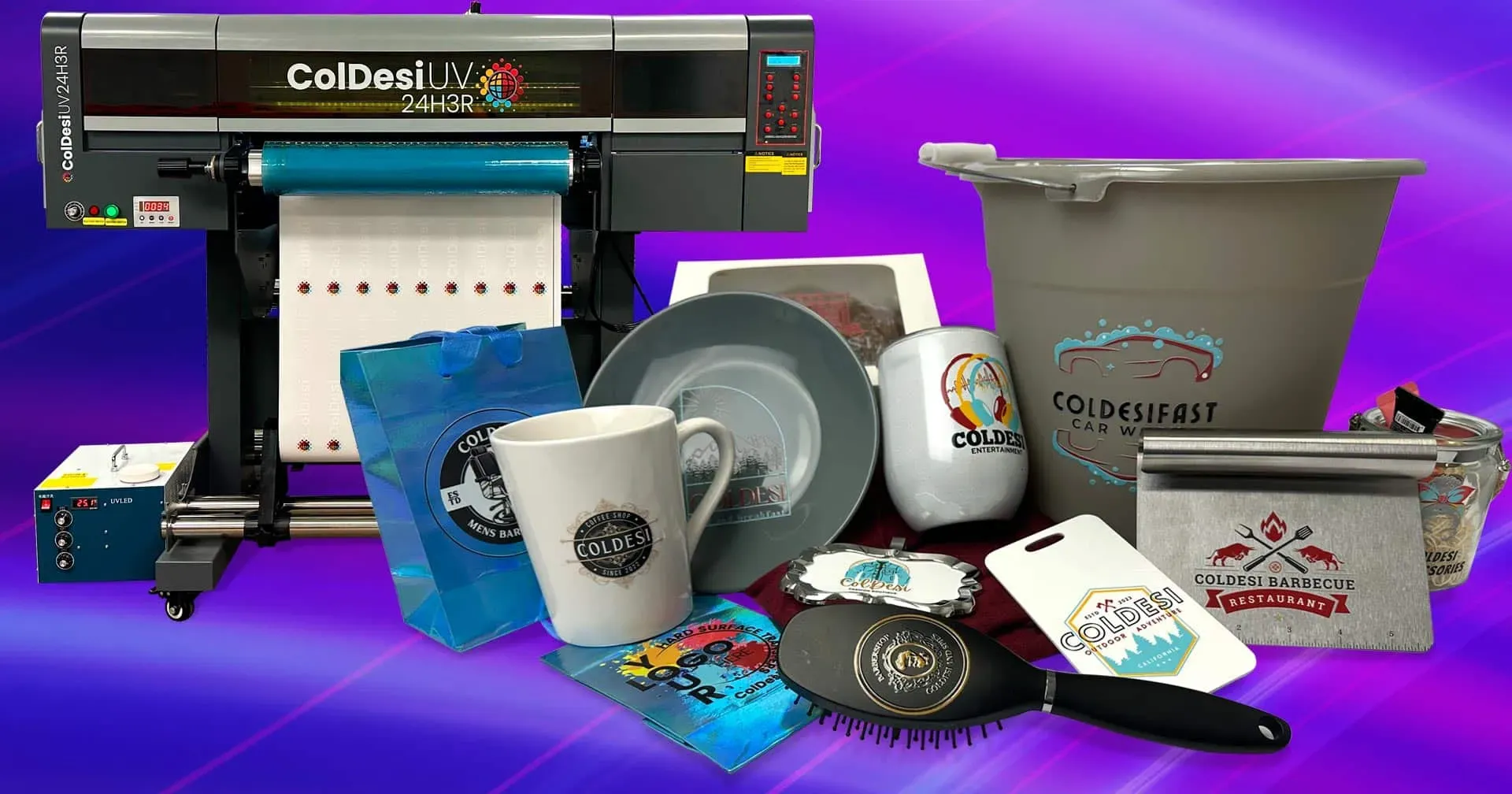UV DTF printing, an innovative printing technology that utilizes Direct-to-Film methods, has transformed the way businesses approach custom prints. This process allows for vibrant, high-quality prints on a variety of surfaces, including challenging materials such as glass and metal, which traditional methods often struggle to handle. As industries embrace UV printing, the demand for top-notch UV DTF printing equipment and supplies continues to surge. With an emphasis on print quality management and sustainable practices, businesses can stay ahead of the curve amid evolving UV printing trends. In this guide, we will explore the essential steps required to dive into the world of UV DTF printing, perfect for both novices and seasoned experts alike.
As the landscape of printing technology shifts, alternative methods like Direct-to-Film printing and UV curing techniques gain prominence among professionals seeking exceptional print outcomes. This cutting-edge process facilitates smooth ink application on various substrates, significantly expanding creative possibilities. With the growing need for versatile printing solutions, industry leaders are increasingly investing in advanced equipment specifically designed for these innovative techniques. Exploring the interconnection between print quality management and emerging UV printing trends can provide valuable insights for businesses looking to enhance their offerings. In our comprehensive guide, we delve into the key aspects of initiating a successful foray into the realm of DTF printing.
The Benefits of UV DTF Printing Over Traditional Methods
One of the major advantages of UV DTF printing is its unmatched versatility. Unlike traditional printing methods, UV DTF can print on a variety of materials including metals, glass, and plastics, making it suitable for a wide array of applications. This technology utilizes ultraviolet light to cure inks instantly, enabling vibrant color reproduction and superior durability, which is often lacking in conventional processes.
Another key benefit is the ability to produce high-quality images with excellent adhesion. UV inks used in DTF printing adhere well to various surfaces, ensuring that prints last longer and withstand harsher environments. This capability is particularly important in industries where durability is paramount, such as signage, promotional products, and custom merchandise.
Frequently Asked Questions
What are the advantages of UV DTF printing compared to traditional printing methods?
UV DTF printing offers several advantages over traditional methods, such as enhanced versatility to print on a variety of materials, including plastics and metals, and the ability to produce vibrant and durable prints. The use of ultraviolet light allows for immediate curing of inks, reducing waiting times and increasing production efficiency.
How do I choose the right UV DTF printing equipment for my business?
When selecting UV DTF printing equipment, consider factors like production volume needs, the materials you plan to print on, and the desired print quality. Renowned brands like Mimaki and Roland offer a range of compatible printers, while high-quality UV inks and transfer films ensure optimal results.
What kind of maintenance is required for UV DTF printing equipment?
Regular maintenance for UV DTF printing equipment includes cleaning printer heads to prevent clogging, monitoring ink levels to avoid interruptions, and recalibrating the printer as needed to maintain print quality. Performing these tasks ensures consistent high performance and longevity of your equipment.
Can you explain the UV DTF printing process from start to finish?
The UV DTF printing process involves several key steps: preparing designs using graphic software, printing onto transfer films with a UV DTF printer, curing the prints using ultraviolet light, and finally applying the cured film to the target material using heat and pressure. Each step is crucial to achieving a successful final product.
What are some current trends in UV printing technology?
Current trends in UV printing technology include the growing demand for sustainable printing practices, advancements in ink formulations for improved durability, and the incorporation of automated features in UV DTF printing equipment, which enhance productivity and reduce manual labor.
How important is print quality management in UV DTF printing?
Print quality management is vital in UV DTF printing as it ensures that designs translate accurately onto the final product. Regular calibration, consistent material checks, and quality inspections during the printing process help maintain high standards and customer satisfaction.
| Key Points | Details |
|---|---|
| Introduction | UV DTF (Direct-to-Film) printing is a revolutionary technique enabling high-quality prints on diverse surfaces. |
| Understanding UV DTF Printing | Utilizes ultraviolet light to cure inks for vibrant, durable prints, increasing its adoption across various industries. |
| Step 1: Research Equipment | Select high-quality printers, UV inks, and compatible transfer films based on operational needs. |
| Step 2: Setup and Calibration | Install necessary software, calibrate printers, and conduct test prints for optimal settings. |
| Step 3: Design Creation | Utilize graphic design software, ensuring designs are correctly sized for printing. |
| Step 4: Printing Process | Load the transfer film, print the design, then cure it with UV light. |
| Step 5: Transfer to Material | Use a heat press to apply cured film to the target material, following recommended specifications. |
| Step 6: Post-Processing | Inspect the print for quality and perform any necessary finishing procedures. |
| Step 7: Maintenance and Troubleshooting | Regularly clean printer components and monitor ink levels to maintain production efficiency. |
| Industry Trends | Focus on sustainability and market growth in textiles, packaging, and promotional products. |
Summary
UV DTF printing is emerging as a transformative force in the printing industry, thanks to its ability to create high-quality, durable prints on a wide range of surfaces. This innovative technology not only overcomes many limitations of traditional printing methods but also caters to the growing demand for versatility in the production of promotional items, textiles, and packaging. By investing in the right equipment and adhering to best practices, anyone can tap into the lucrative benefits of UV DTF printing. Staying updated with industry trends, especially regarding sustainability and market growth, allows businesses to remain competitive and relevant as they navigate the future of printing technology.

